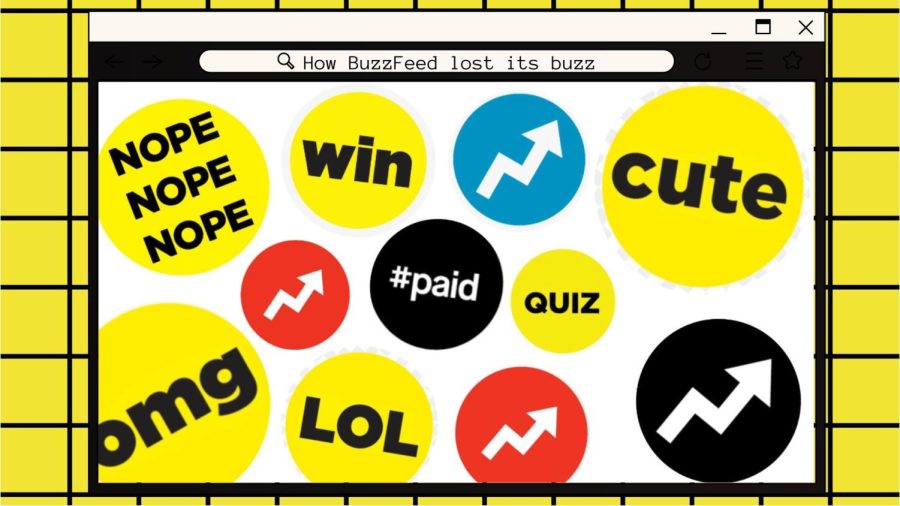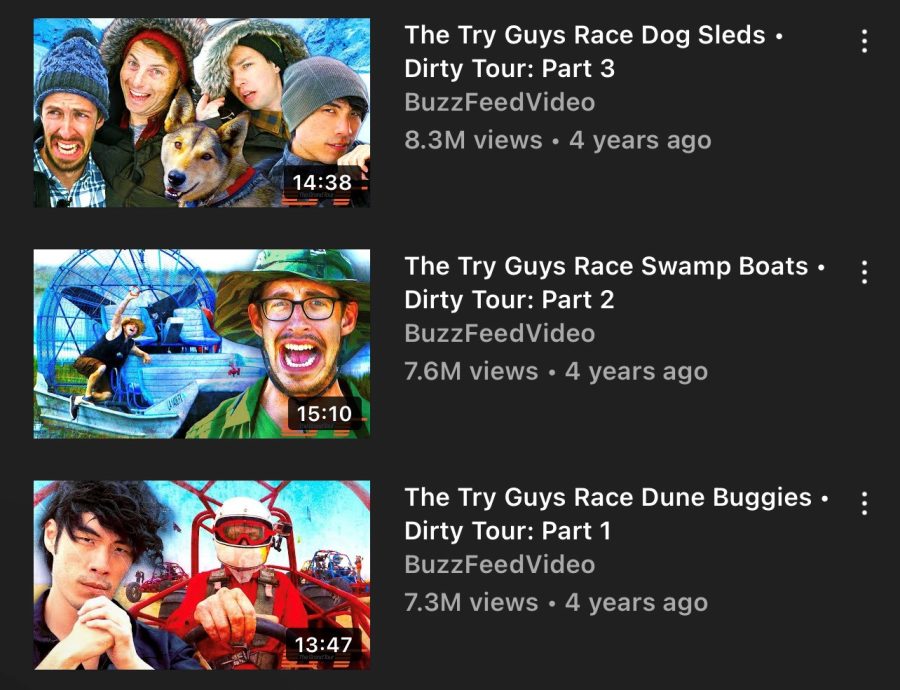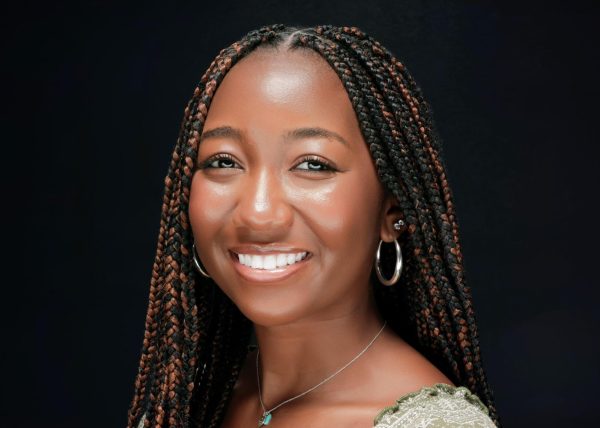How Buzzfeed lost its buzz
The company of Buzzfeed and its numerous YouTube channels generated popularity in the 2010s. Since then, the channel continues to experience a decline from its glory days, with multiple fans growing disinterested. “I certainly have noticed a drop in views around the same period I stopped watching. I believe the main issue is the failure to produce quality content that keeps the audience captivated,” magnet sophomore Riley Kennard said.
October 24, 2022
In 2006, a young co-founder of the Huffington Post, Jonah Peretti and entrepreneur John Seward Johnson III founded BuzzFeed, an experimental lab with the purpose of tracking viral trends on social media. Five years later in 2011, the company expanded via the creation of its first YouTube channel, “BuzzFeedVideo.” Traction around the company began to rise in the following years, and created numerous sub-channels, such as “LadyLike,” “As/Is,” “Buzzfeed Celeb” and “Buzzfeed News.” During the early 2010s, BuzzFeed received acclaim and success through its content geared toward a millennial audience, with numerous videos across its channels amassing tens of millions of views. However, as the decade drew to a close, the company and its online audience witnessed the dramatic decline of BuzzFeed.
Much of BuzzFeed’s content gears toward a millennial audience, and the age demographic of the content producers mirrors that. As of 2020, BuzzFeed reached 60% of millennials in the United States. People flew and visited the company’s YouTube channel and the subsequent website for their array of relatable and, at times, ridiculous content. Buzzfeed’s eccentric titles and thumbnails hooked audiences and encouraged them to visit the platforms again. Through the company’s channel, multiple creators such as Devin Lytle and Jenny Lorenzo became fan favorites. Other members of the channel created their own brands and show through the company, such as Ryan Bergara and Shane Madej with “BuzzFeed: Unsolved,” and Eugene Lee Yang, Zach Kornfeld, Keith Habersberger and formerly, Ned Fulmer with “The TryGuys.”
In 2017, fan-favorite employee Safiya Nygaard published a video titled, “Why I Left Buzzfeed,” on her personal Youtube channel. Nygaard worked for the company from April 2015 to January 2017 as a video producer, predominantly on “LadyLike.” In the video, the former worker states that her reasoning behind separating herself from the company stemmed from wanting to claim her sense of independence, and the misalignment between her own goals and those of Buzzfeed.
“I have no question that making LadyLike on such a big platform was an amazing opportunity, and I learned so much at Buzzfeed, and I’m so thankful for all the opportunities they gave me and everything that I learned there. But I think there is a difference between them owning content that I made for them, which is what I signed up for when I started working there, and them owning my name, which is a line that we didn’t cross but I think we were approaching,” Nygaard said.
In the wake of Nygaard’s video, a slew of Buzzfeed employees released their own videos and statements detailing their reasons for leaving the company. The explanations behind staff departures ranged from wanting autonomy to their ideas to yearning to make better content and wanting to reclaim their sense of self.
Buzzfeed came under fire for its lack of credibility around its news sector. BuzzFeed News ranked “more distrusted than trusted” across all political party lines in a 2017 survey of credible news sources. The company also faced criticism when it published uncorroborated memos featuring President Donald Trump on its website in 2017. Peretti defended the publishing of the documents, deeming them newsworthy.
The careers of several former employees experienced an upward trajectory in the years after they left. After leaving, Nygaard created a lipstick line with the brand ColorPop in 2019, and her personal Youtube channel amassed over nine million followers. Quinta Brunson, a former content creator for BuzzFeed, recently won an Emmy award for her writing on “Abbott Elementary,” the hit sitcom she created for ABC. Several individuals who departed from Buzzfeed comprised the channel’s viewership, and fans found little incentive to keep watching with the sum of its parts no longer there.
“Safiya’s resignation shocked me because it seemed like she was really happy with the company. But, as she branched off on her own, I’m glad she did! The TryGuys did the same thing but I expected their resignation because they already were very close-knit and making their own videos,” magnet sophomore Angel Chung said.
Currently, BuzzFeed posts content on their main and subchannels, with BuzzFeed Video confidentially standing at 20.3 million subscribers. Views on the channel decreased to hundreds of thousands, as opposed to the millions of views the channel received previously. Fans of the channel wonder whether or not BuzzFeed could ever see the glory or the numbers they once saw.
“I believe that if BuzzFeed continues to produce subpar content that fails to captivate and reinvoke their audience’s interest, they will without a doubt fall into irrelevance. That being said, if reforms are made in the proper areas, BuzzFeed could once again rise to their previous levels of success,” magnet sophomore Riley Kennard said.





